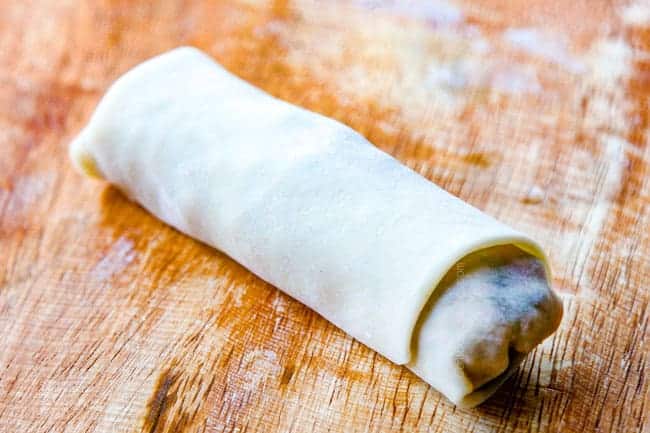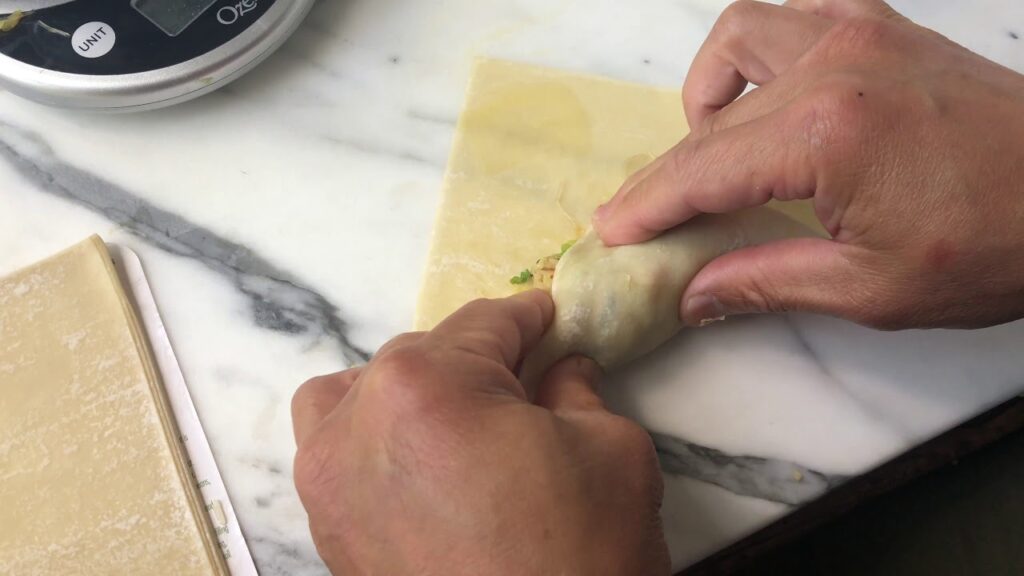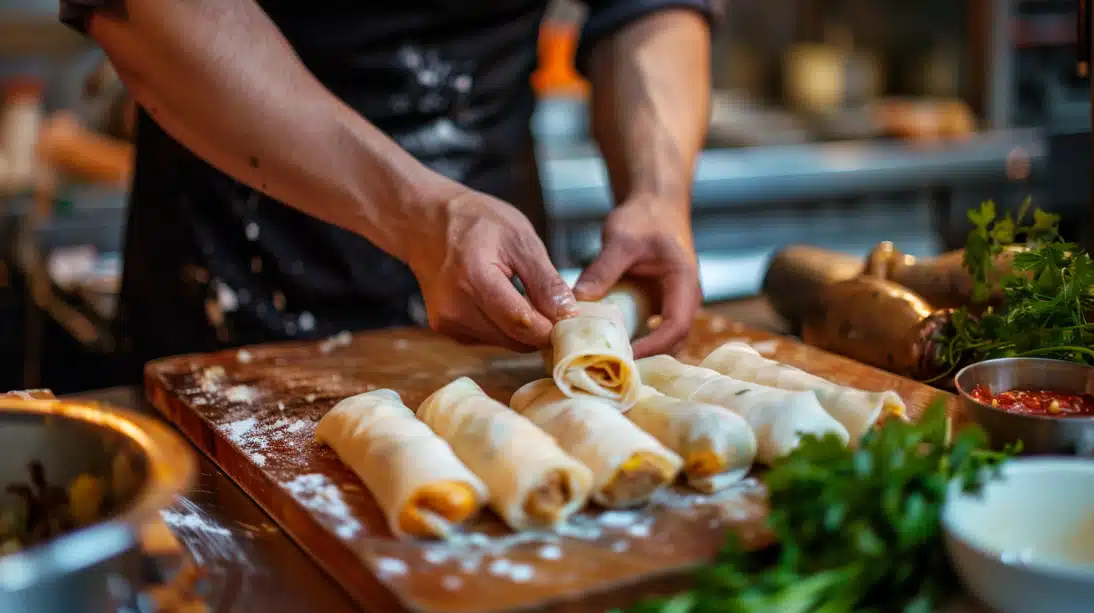Making egg rolls at home can be a fun and rewarding experience, but sealing them can be problematic.
If you don’t wrap and seal your egg rolls properly, they can fall apart during frying, leaving you with a disappointing mess.
Luckily, following a few simple tips and techniques, you can learn how to seal your egg rolls securely every time, ensuring they stay intact and crispy when cooked.
In this step-by-step guide, we’ll walk you through sealing egg rolls, from choosing the right wrapper to mastering the folding method.
We’ll also share some expert advice on preventing common mistakes so you can create perfect, restaurant-quality egg rolls in your kitchen.
Importance of Proper Sealing of Egg Rolls

Sealing your egg rolls correctly ensures they turn out perfectly crispy and delicious.
When you don’t seal the wrappers well, the filling can spill out during frying, resulting in a greasy, unappealing mess.
Oil seeping into the rolls, causing them to become soggy and break apart easily, is a common problem caused by improper sealing.
This affects not only the texture but also the overall taste of your egg rolls.
Moreover, poorly sealed egg rolls can lead to inconsistent cooking, with some parts overcooked while others remain undercooked.
Mastering the technique of sealing egg rolls properly is crucial to avoiding these issues and achieving restaurant-quality results.
Common Mistakes and Solutions for Perfect Egg Roll
1. Overstuffing the Wrapper

One common error is adding too much filling to the egg roll wrapper, which can cause it to tear during rolling or while cooking.
An overstuffed egg roll is more likely to burst or leak, resulting in a messy and unappealing final product.
Solution: To avoid this issue, use only 2-3 tablespoons of filling for each egg roll. This ensures the wrapper covers the filling completely and securely without straining the dough.
2. Improper Sealing

Inadequately sealing the egg rolls can cause them to open up during cooking, allowing the filling to spill out and causing a greasy mess.
This affects the appearance of the egg rolls and can result in inconsistent cooking.
Solution: To prevent this, ensure a thorough application of the sealing agent (egg wash or cornstarch slurry) along the edges of the wrapper. Press firmly to seal the edges before cooking, creating a tight and secure seal.
3. Uneven Wrapping

Loose or uneven wrapping can result in inconsistent cooking and may cause the filling to leak.
If the egg roll is not wrapped tightly enough, the filling may shift during cooking, leading to an uneven distribution of ingredients and potential leaks.
Solution: Practice consistent folding techniques to ensure each fold is tight and the ends are securely tucked in. Take your time when wrapping, and ensure each egg roll is uniform in shape and size for even cooking.
4. Using Dry Wrappers

Allowing the wrappers to dry out can make them brittle and prone to tearing.
If exposed to air for too long, they will be difficult to work with and more likely to break during the rolling process.
Solution: To maintain the moisture in the wrappers, keep the unused ones covered with a damp cloth while assembling the egg rolls. This prevents them from drying out and ensures they remain pliable and easy to work with.
Cooking and Final Considerations for Egg Roll

Cooking Methods
Depending on your desired texture and health preferences, you can fry, bake, or air-fry your egg rolls.
Frying provides the crispiest texture while baking and air-frying offer healthier options with less oil.
If frying, keep the oil at 350°F to ensure a crispy exterior without absorbing too much oil.
Achieving the Desired Texture
Adjust cooking times and techniques based on your chosen cooking method.
For instance, brushing a light oil coating on egg rolls before air-frying can help achieve a texture like frying.
Rotate or turn the egg rolls halfway through cooking to ensure even crisping and browning.
Aftercare
Handle and store sealed egg rolls properly before cooking to maintain their shape and texture.
If not cooking immediately, store them in the refrigerator to prevent the wrappers from drying.
To freeze egg rolls, place them on a baking sheet before transferring them to a freezer-safe bag to prevent sticking and retain their shape.
Conclusion
Mastering the art of sealing egg rolls is essential for creating restaurant-quality, crispy, and delicious treats at home.
Following the tips and techniques outlined in this guide, you can avoid common mistakes such as overstuffing the wrapper, improper sealing, uneven wrapping, and using dry wrappers.
Remember to use the right amount of filling, apply the sealing agent thoroughly, and practice consistent folding techniques to ensure your egg rolls are tightly sealed and ready for cooking.
Whether you choose to fry, bake, or air-fry your egg rolls, proper sealing will help you achieve the perfect texture and prevent the filling from spilling out.
You can create irresistible, perfectly sealed egg rolls that impress your family and friends with a little practice and attention to detail.




